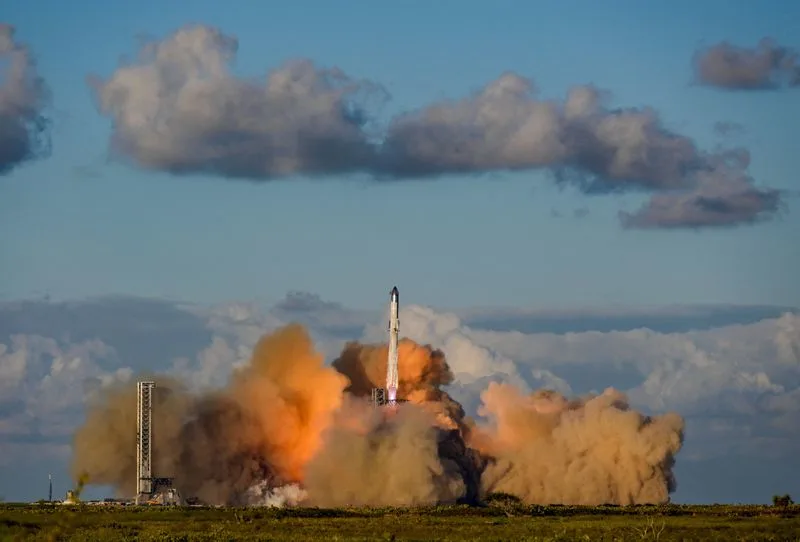SpaceX Marks Another Milestone
SpaceX successfully completed its 11th Starship test flight on Monday, marking another step toward future moon and Mars missions. The test took place at the company’s Starbase facility in Texas and included several key trials designed to enhance spacecraft performance and safety.
The mission tested Starship’s heat shield tiles, engine relight systems, and booster landing capabilities. It was also the final flight before SpaceX introduces a new, upgraded version of the giant rocket, which will feature major improvements aimed at long-duration space travel.
Successful Launch and Landing

The Starship system, consisting of the Starship upper stage mounted on its Super Heavy booster, lifted off at 6:23 p.m. CT (2323 GMT). After sending the upper stage into orbit, the Super Heavy booster performed a soft water landing in the Gulf of Mexico before self-destructing as planned.
Meanwhile, the Starship upper stage continued into space, deployed a batch of mock Starlink satellites, and briefly reignited its engines before descending. It tested new heat-resistant tiles during re-entry and ultimately splashed down safely in the Indian Ocean, west of Australia.
NASA Praises SpaceX Progress
Acting NASA Administrator Sean Duffy congratulated SpaceX on the achievement, calling it “another major step toward landing Americans on the Moon’s south pole.” NASA has shown strong interest in the Starship program, as it plays a critical role in the Artemis mission, which aims to return humans to the lunar surface by 2027.
Next-Generation Starship Prototype
According to SpaceX, future tests will involve an advanced version of Starship equipped with new docking adapters and refueling systems. These upgrades are vital for orbital refueling—an essential process for extended missions to the Moon and Mars.
Gwynne Shotwell, SpaceX President, said the upcoming prototype “is really the vehicle that could take humans to the Moon and Mars.” She added that the company aims to launch the improved version by the end of this year or early next year.
A Key Role in NASA’s Artemis Program
Under a $3 billion NASA contract awarded in 2021, SpaceX is developing Starship as part of the Artemis lunar program. The spacecraft will serve as a lunar lander capable of carrying astronauts and cargo to the Moon’s surface.
The company also plans multiple Starship tanker missions to transfer fuel in orbit—a critical step before lunar landings can occur. This complex refueling process is among the final hurdles before Starship is cleared for human missions.
Challenges and Future Plans
Despite the successful flight, NASA advisers have warned that delays in the rocket’s lander design could slow the U.S. lunar timeline. Still, SpaceX continues to make steady progress toward its goals.
Beyond lunar exploration, Starship is central to Elon Musk’s long-term vision of enabling human settlement on Mars. It is also expected to launch heavier Starlink satellites, expanding the company’s global broadband network.
Conclusion
With its 11th successful test, SpaceX has demonstrated continued momentum toward deep-space exploration. The company now turns its focus to launching the upgraded Starship—an essential step in achieving its ambitious plans for the Moon, Mars, and beyond.
In other news also read about Why Nvidia Is Pouring Billions Into Elon Musk’s xAI — The $20 Billion Bet on the Future of Artificial Intelligence









